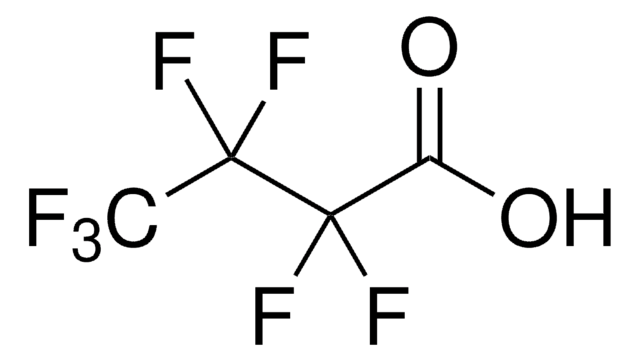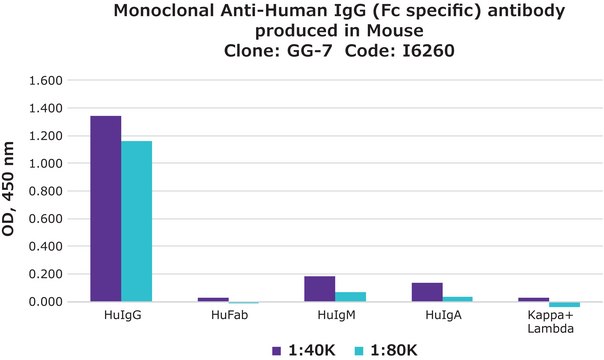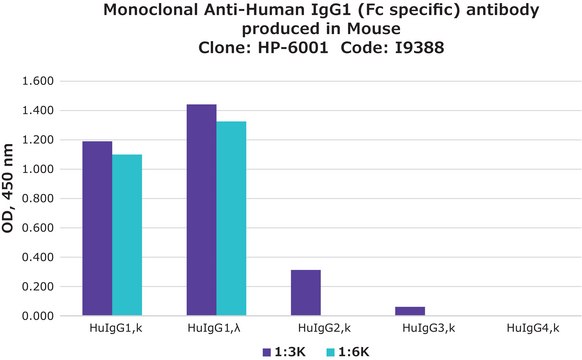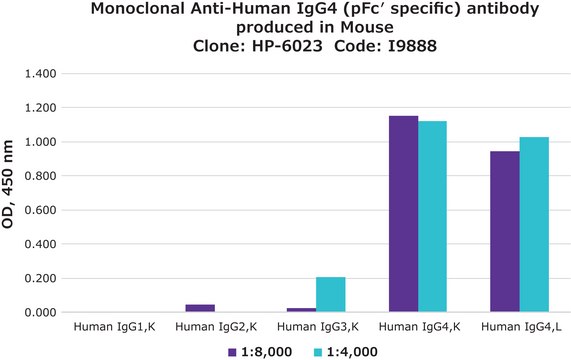I6260
Monoclonal Anti-Human IgG (Fc specific) antibody produced in mouse
clone GG-7, ascites fluid
Select a Size
Select a Size
About This Item
Recommended Products
biological source
mouse
Quality Level
conjugate
unconjugated
antibody form
ascites fluid
antibody product type
secondary antibodies
clone
GG-7, monoclonal
contains
15 mM sodium azide
technique(s)
indirect ELISA: 1:40,000
isotype
IgG1
shipped in
dry ice
Related Categories
1 of 4
This Item | I9388 | I9888 | I5635 |
|---|---|---|---|
| technique(s) indirect ELISA: 1:40,000 | technique(s) indirect ELISA: 1:3,000 | technique(s) indirect ELISA: 1:2,000 | technique(s) indirect ELISA: 1:5,000 |
| conjugate unconjugated | conjugate unconjugated | conjugate unconjugated | conjugate unconjugated |
| biological source mouse | biological source mouse | biological source mouse | biological source mouse |
| antibody form ascites fluid | antibody form ascites fluid | antibody form ascites fluid | antibody form ascites fluid |
| isotype IgG1 | isotype IgG2b | isotype IgG3 | isotype IgG1 |
| storage temp. −20°C | storage temp. −20°C | storage temp. −20°C | storage temp. −20°C |
General description
Specificity
Immunogen
Application
- to study the relationship between cell size, cell cycle and specific recombinant protein productivity
- in the label-free homogeneous assay to identify inhibitors of a4b7 integrin-mediated cell adhesion to mucosal addressin cell adhesion molecule (MadCAM)
- in enzyme-linked immunosorbent assay
Biochem/physiol Actions
Physical form
Storage and Stability
Disclaimer
Not finding the right product?
Try our Product Selector Tool.
Storage Class
10 - Combustible liquids
wgk_germany
nwg
flash_point_f
Not applicable
flash_point_c
Not applicable
Choose from one of the most recent versions:
Already Own This Product?
Find documentation for the products that you have recently purchased in the Document Library.
Customers Also Viewed
Our team of scientists has experience in all areas of research including Life Science, Material Science, Chemical Synthesis, Chromatography, Analytical and many others.
Contact Technical Service














